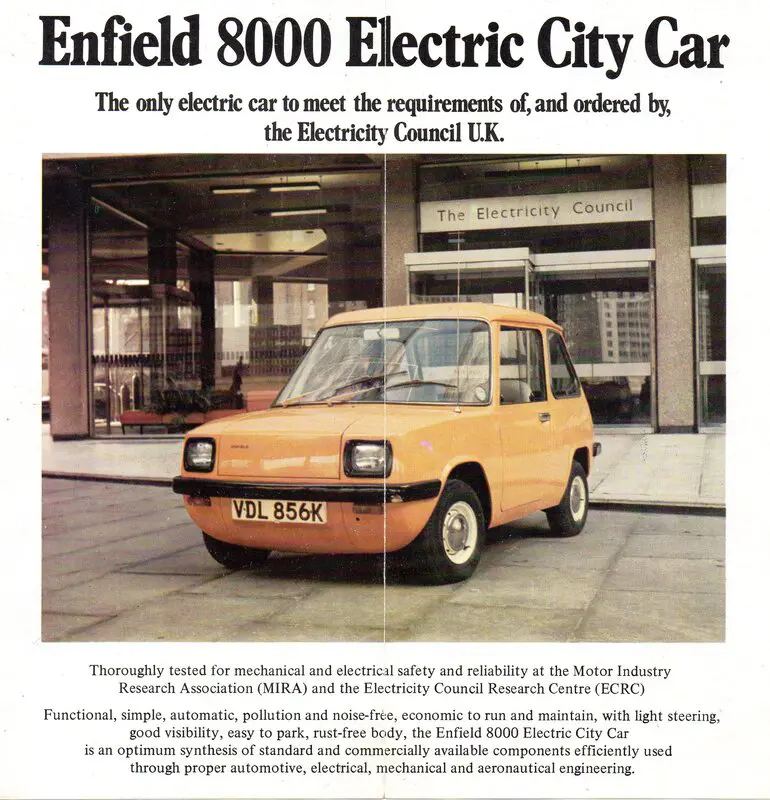THE PIONEER ELECTRIC CAR - THE ENFIELD 8000
28 September 2022
Today, electric cars are a hot topic in the news, but those with long memories will recall a battery-powered vehicle that dates nearly 50 years. The Enfield 8000 debuted to a considerable amount of publicity and, on paper, seemed to be the ideal vehicle for motoring in the post-OPEC fuel crisis era. But, it was less common than an episode of Crossroads in which the cast remembered their lines.
In 1966, the United Kingdom Electricity Council ran a competition to promote battery-powered cars. The winning design was from Enfield Automotive, and the prototype made its debut three years later. Sir John Samuel designed the 8000 with Konstantine Adraktas, an MIT-trained Greek aerospace engineer, as the company’s chair and technical director. At the launch in 1973, he boasted the Enfield had “only eight moving parts – and four of them are wheels”, while the aluminium bodywork was “the most aerodynamic shape of any car in the world.” Indeed, the CD figure was an impressive 0.275.

The 8000 employed brakes, wheels, and modified doors from a Mini, Hillman Imp front suspension, a Reliant three-wheeler sourced rear axle, and a tubular steel chassis. Power was via a 48-volt DC motor with six zinc-lead acid batteries. To recharge, the owner had to plug their Enfield into a standard domestic wall socket for 10-12 hours or use the optional ‘rapid charge’ facility - Adraktas advised against the latter method, telling the press, “this doesn’t do the batteries much good.” The range was 66 miles, reduced to 50 in urban traffic, with a top speed of 44 mph.
At just 9ft. 4ins in length – or six inches shorter than a Mini and with a remarkable turning circle, Adraktas logically marketed the Enfield as a commuter vehicle. There are already numerous two-car British families. One member, say the husband, could use the electric car for his drive to work. His wife could then use the bigger car which during the week as well as for longer trips over the weekends.” Buyers could specify their 8000 in red, orange, yellow, or white; a heater was £30 extra.
When The Guardian tested the Enfield in 1974, they found it to have “perfectly acceptable acceleration up to 30 mph (it takes about ten seconds) combined with good handling, steering, and braking. The ride is rather hard, which would be a disadvantage on a faster vehicle, but it does mean the car is able to corner very rapidly.” Autocar mused, “Naturally, with a kerb weight of just a little under 1 ton and only 8bhp to propel it, the Enfield is no candidate for the drag strips.”
Further drawbacks were seating for only two, the fact that in cold weather the range could be as little as 15 miles, and the price. In 1971 the projected figure was £600-£650, but in 1975 it was £2,808, meaning the Enfield cost almost as much as Wolseley ‘Wedge’ - or the equivalent of two Mini 1000s. A move from the Cowes factory to the Greek island of Syros did not enhance the 8000’s popularity, with a production run of just 120 by the time of its demise in 1976.
And perhaps the Enfield should be filed under the category of ‘Bold Experiments,’ for as this 1977 Thames TV report demonstrates, it did possess a certain charm…
